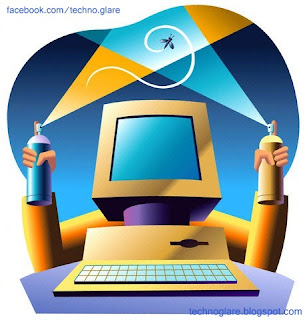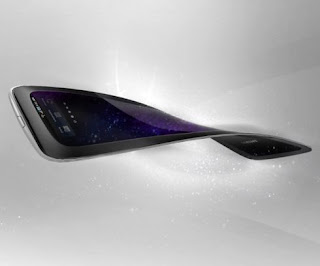How does anti-virus software work?
An anti-virus software program is a computer program that can be used to scan files to identify and eliminate computer viruses and other malicious software (malware).
Anti-virus software typically uses two different techniques to accomplish this:
- Examining files to look for known viruses by means of a virus dictionary
- Identifying suspicious behavior from any computer program which might indicate infection
Most commercial anti-virus software uses both of these approaches, with an emphasis on the virus dictionary approach.
Virus dictionary approach:
In the virus dictionary approach, when the anti-virus software examines a file, it refers to a dictionary of known viruses that have been identified by the author of the anti-virus software. If a piece of code in the file matches any virus identified in the dictionary, then the anti-virus software can then either delete the file, quarantine it so that the file is inaccessible to other programs and its virus is unable to spread, or attempt to repair the file by removing the virus itself from the file.
In the virus dictionary approach, when the anti-virus software examines a file, it refers to a dictionary of known viruses that have been identified by the author of the anti-virus software. If a piece of code in the file matches any virus identified in the dictionary, then the anti-virus software can then either delete the file, quarantine it so that the file is inaccessible to other programs and its virus is unable to spread, or attempt to repair the file by removing the virus itself from the file.
To be successful in the medium and long term, the virus dictionary
approach requires periodic online downloads of updated virus dictionary
entries. As new viruses are identified "in the wild", civically minded
and technically inclined users can send their infected files to the
authors of anti-virus software, who then include information about the
new viruses in their dictionaries.
Dictionary-based anti-virus software typically examines files when
the computer's operating system creates, opens, and closes them; and
when the files are e-mailed. In this way, a known virus can be detected
immediately upon receipt. The software can also typically be scheduled
to examine all files on the user's hard disk on a regular basis.
Although the dictionary approach is considered effective, virus
authors have tried to stay a step ahead of such software by writing
"polymorphic viruses", which encrypt parts of themselves or otherwise
modify themselves as a method of disguise, so as to not match the
virus's signature in the dictionary.
Suspicious behavior approach:
The suspicious behavior approach, by contrast, doesn't attempt to identify known viruses, but instead monitors the behavior of all programs. If one program tries to write data to an executable program, for example, this is flagged as suspicious behavior and the user is alerted to this, and asked what to do.
The suspicious behavior approach, by contrast, doesn't attempt to identify known viruses, but instead monitors the behavior of all programs. If one program tries to write data to an executable program, for example, this is flagged as suspicious behavior and the user is alerted to this, and asked what to do.
Unlike the dictionary approach, the suspicious behavior approach
therefore provides protection against brand-new viruses that do not yet
exist in any virus dictionaries. However, it also sounds a large number
of false positives, and users probably become desensitized to all the
warnings. If the user clicks "Accept" on every such warning, then the
anti-virus software is obviously useless to that user. This problem has
especially been made worse over the past 7 years, since many more
nonmalicious program designs chose to modify other .exes without regards
to this false positive issue. Thus, most modern anti virus software
uses this technique less and less.
Other ways to detect viruses:
Some antivirus-software will try to emulate the beginning of the code of each new executable that is being executed before transferring control to the executable. If the program seems to be using self-modifying code or otherwise appears as a virus (it immeadeatly tries to find other executables), one could assume that the executable has been infected with a virus. However, this method results in a lot of false positives.
Some antivirus-software will try to emulate the beginning of the code of each new executable that is being executed before transferring control to the executable. If the program seems to be using self-modifying code or otherwise appears as a virus (it immeadeatly tries to find other executables), one could assume that the executable has been infected with a virus. However, this method results in a lot of false positives.
Yet another detection method is using a sandbox. A sandbox emulates
the operating system and runs the executable in this simulation. After
the program has terminated, the sandbox is analysed for changes which
might indicate a virus. Because of performance issues this type of
detection is normally only performed during on-demand scans.
Issues of concern:
Macro viruses, arguably the most destructive and widespread computer
viruses, could be prevented far more inexpensively and effectively, and
without the need of all users to buy anti-virus software, if Microsoft
would fix security flaws in Microsoft Outlook and Microsoft Office
related to the execution of downloaded code and to the ability of
document macros to spread and wreak havoc.
User education is as important as anti-virus software; simply
training users in safe computing practices, such as not downloading and
executing unknown programs from the Internet, would slow the spread of
viruses, without the need of anti-virus software.
Computer users should not always run with administrator access to
their own machine. If they would simply run in user mode then some types
of viruses would not be able to spread.
The dictionary approach to detecting viruses is often insufficient
due to the continual creation of new viruses, yet the suspicious
behavior approach is ineffective due to the false positive problem;
hence, the current understanding of anti-virus software will never
conquer computer viruses.
There are various methods of encrypting and packing malicious
software which will make even well-known viruses undetectable to
anti-virus software. Detecting these "camouflaged" viruses requires a
powerful unpacking engine, which can decrypt the files before examining
them. Unfortunately, many popular anti-virus programs do not have this
and thus are often unable to detect encrypted viruses.
Companies that sell anti-virus software seem to have a financial
incentive for viruses to be written and to spread, and for the public to
panic over the threat.












































